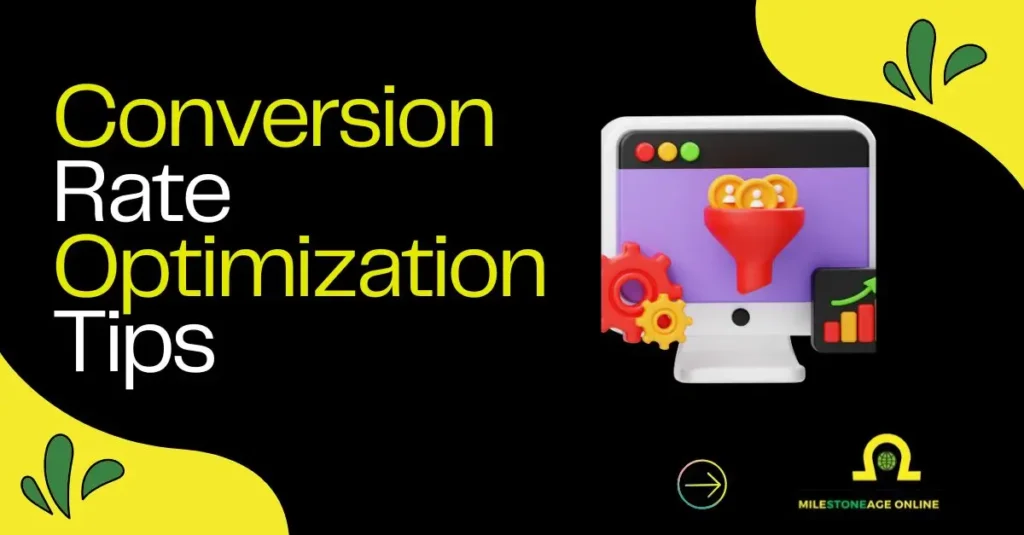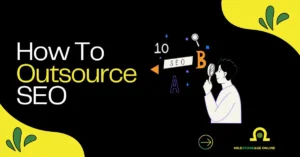CRO is the disciplined process of turning more visitors into customers or leads by improving user experience, reducing friction, and running controlled experiments (A/B tests). Benchmarks vary by industry, but ecommerce conversion often sits around 1.6–3.4%, and average cart abandonment is ~70%. Prioritize high-impact pages (landing, checkout, forms), speed (Core Web Vitals), trust signals, and clear CTAs.
Imagine this. Your website gets traffic every day. People scroll, click, and browse. Yet many leave without buying, signing up, or taking the step you want. That gap between visits and actions is where Conversion Rate Optimization (CRO) comes in.
It’s not magic. It’s a process of finding what stops people, fixing it, and testing again. Small changes—like faster pages or clearer checkout steps—can mean more sales and sign-ups.
Businesses in the US, UK, Canada, and everywhere else face the same challenge: turning visitors into customers. CRO gives you a clear path to do just that.
What CRO Is (and Isn’t) — Clear Definition, Formula & Scope
CRO is simple to grasp yet easy to misunderstand. Let’s clear it up now.
Plain-English Definition
CRO means getting more visitors to take the action you want.
- Buy a product: Add to cart and complete checkout.
- Sign up: Email newsletter, free trial, or demo request.
- Request info: Quote form, consultation, or callback.
It’s a practice built on data and testing, not random changes.
Core Formula
Conversion rate is a quick math check on performance.
- Formula: (Conversions ÷ Sessions or Users) × 100
- Example: 500 sales ÷ 20,000 visitors = 2.5% conversion rate
This gives a clear way to compare across pages or campaigns.
Where CRO Applies
CRO works across digital touchpoints, not just websites.
- Websites: E-commerce stores, service pages, blogs
- Landing pages: Ad-driven signups and event registrations
- Mobile apps: In-app purchases, subscription starts
- Emails: Click-throughs to offers and CTAs
- Paid media pages: Post-click experiences in B2C and B2B
What CRO Isn’t
It’s not a shortcut or guesswork.
- Not hacks: Quick tricks rarely bring lasting results
- Not random changes: Testing must be structured
- Not guesswork: Backed by analytics, research, and UX principles
- Not one-time: CRO is an ongoing cycle of testing and learning
Benchmarks & Why CRO Matters
Numbers set the stage for realistic goals. They show where you stand.
Reality Check on Rates
Conversion rates are lower than many expect.
- Global ecommerce: Around 1.6% to 1.65% in recent studies
- Top performers: Some reach 3.44% or higher
- Use as direction only: Benchmarks vary by niche and country
Landing Page Medians
Landing pages can perform better than stores.
- Median rate: About 6.6% in recent quarterly reports
- Reason: Focused intent and fewer distractions
Abandonment Is the Enemy
Abandonment eats revenue across industries.
- Average cart abandonment: Close to 70%
- Categories differ: Travel and luxury often see higher drop-offs
- Fixes matter: Clear costs, faster checkout, and trust badges reduce it
Audit Your Current Funnel (Where You Stand)
You can’t improve what you don’t measure. Start with a clear audit.
Fast Diagnostic Checklist
Begin with data that shows where you lose people.
- GA4 goals: Events and funnels must be set up
- Exit pages: Identify where users leave
- Device mix: Compare mobile and desktop rates
- On-site search: See what users can’t easily find
- Review mining: Spot complaints around shipping, returns, or trust
Tech & UX Baseline
Strong tech and design support better results.
- Speed tests: Check Core Web Vitals scores
- Accessibility: Make pages usable for all
- Mobile parity: Same options and ease as desktop
- Tracking integrity: Ensure analytics fire on every step
Evidence to Gather
Collect proof before testing changes.
- Heatmaps: Show where people scroll or stop
- Session replays: Reveal user frustration
- Form analytics: Find fields causing abandonment
- Checkout drop-offs: Measure how far buyers reach before leaving
User Research That Finds Friction
Numbers tell part of the story, but voices fill the gaps.
Quant + Qual, Together
Mix data and feedback for a complete view.
- Quant data: GA4 cohorts, funnel leaks, device segmentation
- Qual data: Exit polls, post-purchase surveys, moderated tests
- Support logs: Chat and support tickets highlight pain points
Jobs-To-Be-Done Prompts
Simple prompts uncover what blocks people.
- Ask: “When you looked for this, what almost stopped you?”
- Probe: “What would have made this easier today?”
Localization Clues (Worldwide Lens)
Global reach adds new layers of friction.
- Shipping language: Clear return policies reduce doubt
- Payment options: Local wallets increase trust
- Currency display: Automatic conversion avoids confusion
- Bilingual needs: French-English in Canada or Spanish-English in the US
From Insight to Hypotheses (Prioritize Smart)
Ideas mean nothing until they are tested with a clear structure. Hypotheses give direction and purpose to experiments.
Hypothesis Template
Write test ideas in a structured way.
- Because [evidence]: Start with proof such as user data or survey feedback
- Changing [element]: Pick a page element like CTA, layout, or headline
- For [audience]: Define segment such as new users or returning buyers
- Will increase [metric]: State goal like conversion rate or form completion
- By [X%]: Give an expected impact to set benchmarks
ICE/PIE Scoring
Rank test ideas so resources go to what matters most.
- Impact: How much change could move results
- Confidence: How sure you are based on data
- Effort: Time and resources needed to run the test
- Start simple: Focus first on low-effort, high-impact opportunities
Guardrails
Protect your test results from false positives.
- Statistical power: Ensure enough sample size for confidence
- No peeking: Do not stop tests the moment numbers shift
- Avoid novelty effects: Wait long enough for user behavior to stabilize
- Frameworks help: Use clear rules from platforms like Optimizely
Experimentation Done Right (A/B & Beyond)
Testing is the engine of CRO. Done right, it gives you real growth.
The 6-Step A/B Framework
Follow a repeatable process for each experiment.
- Collect data: Spot weak points with analytics and user research
- Set goals: Define what success looks like
- Form hypothesis: Use structured test ideas
- Design variants: Build a challenger version against control
- Run test: Randomize and split traffic fairly
- Analyze and ship: Review results, then apply winners
Validity Basics
Keep your experiments reliable and fair.
- Randomization: Users must not self-select into groups
- Sample size: Large enough for accurate outcomes
- Minimum detectable effect: Choose the smallest change worth testing
- Run time: Cover full cycles like weekdays and weekends
When to Use MVT or Bandits
Different tools fit different testing needs.
- Multivariate (MVT): Best when multiple UI elements interact
- Bandit tests: Better for short-term promos or fast-moving campaigns
Representative Tools
Good tools make tests smooth and reliable.
- Optimizely and VWO: Popular testing platforms for web and apps
- QA tagging: Check tags and events fire correctly
- Data layer checks: Confirm test data flows into analytics systems
High-Impact Fixes (Landing Pages, Checkout, Forms)
Not all changes are equal. Some fixes move results faster than others.
Landing Pages That Convert
Landing pages need focus and clarity.
- Clear promise: Headline should tell users what they gain
- Skimmable benefits: Use bullets and short sentences
- Proof points: Add reviews, trust badges, or partner logos
- Singular CTA: Guide users toward one key action
- Query match: Align ad or search intent with page content
Checkout UX Essentials
Checkout often makes or breaks conversions.
- Guest checkout: Do not force account creation
- Progress indicators: Show steps left to complete purchase
- Address autocomplete: Reduce typing and errors
- Total cost clarity: No hidden charges at the end
- Wallet pay: Support Apple Pay, Google Pay, or PayPal
- Reassurance copy: Remind users about returns or secure payments
- Fix common pitfalls: Follow Baymard Institute’s 11 checkout guidelines
Form Optimization
Even small forms can lose users.
- Fewer fields: Only ask for what’s needed
- Inline validation: Guide users while they type
- Microcopy: Ease fears around sensitive fields like phone or card
- Error recovery: Help users fix mistakes without starting over
Make It Fast — Speed, Core Web Vitals & Revenue
Speed is not a luxury. Faster sites bring direct gains in conversions.
Why Speed Pays
Even small time savings drive measurable results.
- 0.1s faster: Can bring 8.4% more retail conversions
- 100ms faster: Adds up to 1.11% more sales
- Speed case studies: Prove the direct tie between speed and revenue
Mobile Reality
Mobile still lags behind desktop.
- Lower conversion: Mobile users convert less than desktop users
- Why: Slow load times and poor UX play a large role
- Fix focus: Speed and clarity on small screens
Practical Fixes
Apply proven techniques to improve Core Web Vitals.
- LCP: Use lightweight, compressed images
- INP: Optimize JavaScript for faster response
- CLS: Reserve space for images and ads to stop shifts
- Critical CSS: Load only needed styles first
- Server-side rendering: Cut load delays
- CDN use: Serve pages faster across regions
- Prefetching: Load likely next pages in advance
Personalization, Messaging & Trust
People buy when the message feels right and the brand feels safe. CRO grows faster when both personalization and trust go hand in hand.
Right Message, Right Segment
Tailor communication for different audiences.
- New vs. returning: Welcome first-timers with simple CTAs, reward loyal users with perks
- High-intent vs. browsing: Push urgency for ready buyers, soft nudges for casual visitors
- Social proof by region: Show US reviews for US visitors, UK charity badges for UK donors
Trust Builders
Trust reduces hesitation and improves conversions.
- Returns promise: Highlight clear, simple return rules
- Delivery dates: Give precise timelines, not vague estimates
- Payment trust marks: Display secure payment logos users already know
- User-generated content: Show customer photos and reviews
- Avoid dark patterns: No tricks, hidden fees, or misleading buttons
UX Writing That Converts
Words matter at every stage of the journey.
- Concrete verbs: Use clear action words like “Buy now” or “Start free trial”
- Anxiety-reducing microcopy: Ease doubts near prices, shipping, and data forms
- Privacy clarity: Explain data use in simple terms
Analytics & Measurement That Stand Up to Scrutiny
Good CRO runs on numbers you can trust. Weak data means weak results.
KPIs to Track
Measure what matters for growth.
- Conversion rate: Main measure of success
- Revenue per visitor: Tracks real dollar impact
- Average order value (AOV): Monitors purchase sizes
- Funnel step CVR: Finds weak links in checkout or signup flow
- Form completion rate: Shows friction in lead capture
- Cohort repurchase: Tracks repeat customer behavior
Attribution & Test Learnings
Know what drives the wins.
- Before/after deltas: Record changes in metrics after each test
- Annotations: Mark tests in analytics dashboards for context
- Playbooks: Save and reuse successful test patterns across channels
Quality Checks
Keep data clean and fair.
- Bot filters: Remove fake or spam traffic
- Event deduplication: Prevent double counting conversions
- Sample-size calculators: Use for accurate test planning
- CUPED (if available): Reduce variance in test analysis
CRO for Channels (PPC, Email, Social)
CRO doesn’t stop at websites. Channels outside your site also drive results.
PPC Post-Click Alignment
Ad clicks need smooth handoffs to landing pages.
- Message match: Align ad keywords with page headlines
- Speed on mobile LPs: Faster load means lower bounce rates
- Capture intent tiers: Serve bottom-funnel offers to ready buyers
Email & SMS
Messages in inbox or phone must guide actions.
- Subject tests: Try different subject lines and preview text
- Offer framing: Clarify discounts, bundles, or trial offers
- Landing flow: Ensure clicks go to friction-free pages
Social Proof & UGC
Social traffic expects relatable content.
- TikTok/IG alignment: Landing page should mirror ad creative style
- Creator quotes: Position influencer reviews above the fold
- Continuity: Maintain visual and tone consistency across platforms
Toolstack (Research → Test → Ship)
Strong tools connect the cycle of research, testing, and shipping. The right stack speeds execution.
Typical Stack
- Research tools: GA4, heatmaps, and session replay
- Surveys: On-site polls and post-purchase surveys
- Experimentation: Platforms like Optimizely or VWO
- Delivery: Tag manager, CMS, and feature flags
- QA tools: Analytics debuggers and accessibility checkers
Pitfalls, Compliance & Ethics
CRO only works when results are honest. Respect data and people alike.
What to Avoid
- Peeking: Ending tests too early for false wins
- False positives: Shipping changes without solid proof
- Overfitting: Segmenting data until results look good
- Misleading patterns: Tricks that hurt long-term trust
Compliance & Respect
- Consent: Collect data with user permission
- GDPR/CCPA: Follow privacy rules across regions
- Accessibility: Ensure pages are usable for everyone
- Honest disclosure: Be clear on prices, terms, and offers
FAQs
What is a “good” conversion rate?
Ranges vary: Ecommerce often sits between 1.6%–3.4% globally
Landing pages: Medians reach around 6.6% in recent studies
Best practice: Measure your baseline, then aim for top-decile rates
What single fix moves the needle fastest?
Speed gains: Faster sites lift conversions directly
Checkout clarity: Showing fees and delivery upfront reduces drop-offs
Industry average: Cart abandonment still hovers near 70%
How long should an A/B test run?
Sample size: Wait until the required volume is met
Cycles: Cover full behavior patterns like weekdays and weekends
Avoid false wins: Don’t stop early when numbers first swing
Do Core Web Vitals affect conversions?
Yes: Small speed gains have proven measurable effects
Case studies: Cloudflare reports lifts tied directly to reduced load times
What if I have low traffic?
Bigger changes: Test more noticeable shifts for clearer results
Pooled goals: Combine micro and macro conversions
Longer runs: Extend duration to get enough data
Sequential tests: Run one major change at a time for clarity
Conclusion — Your First 30 Days Plan
CRO works best when you start with structure. Small, steady wins compound fast.
- Week 1: Set up analytics, check site speed, and run a friction survey
- Week 2: Build clear hypotheses and design one test on a key page
- Week 3: Launch an A/B test, monitor results, and close tracking gaps
- Week 4: Ship the winning version, document it, and prepare three new tests






